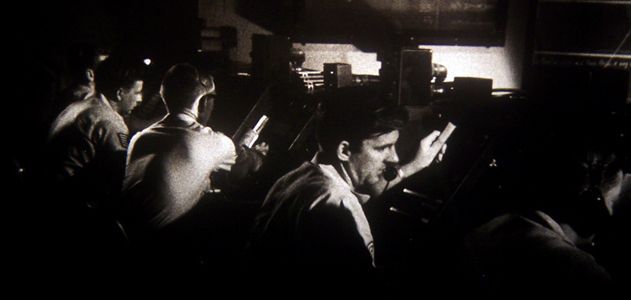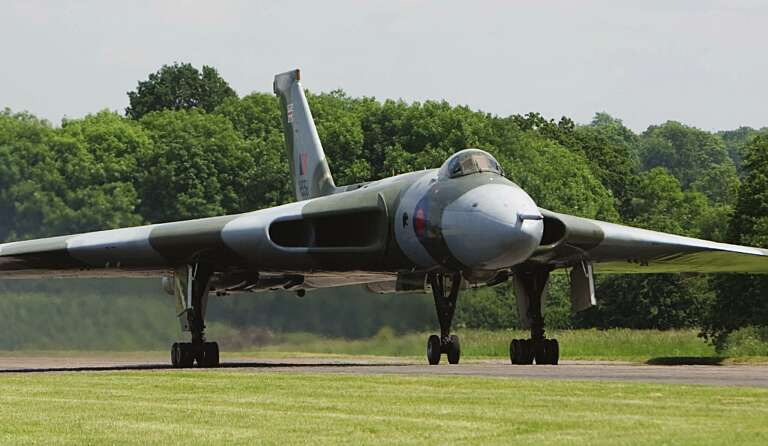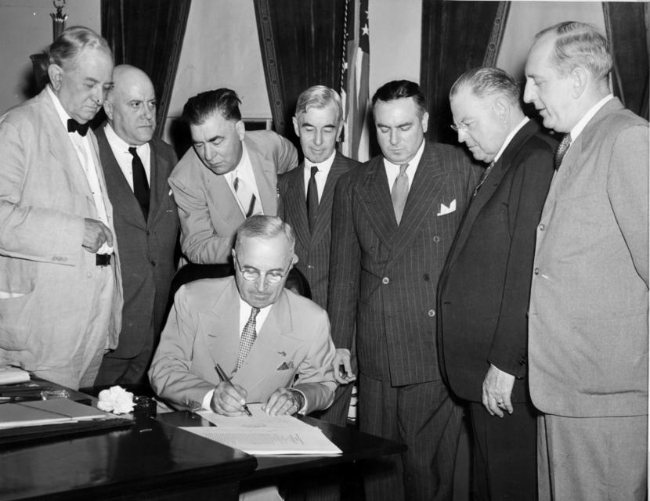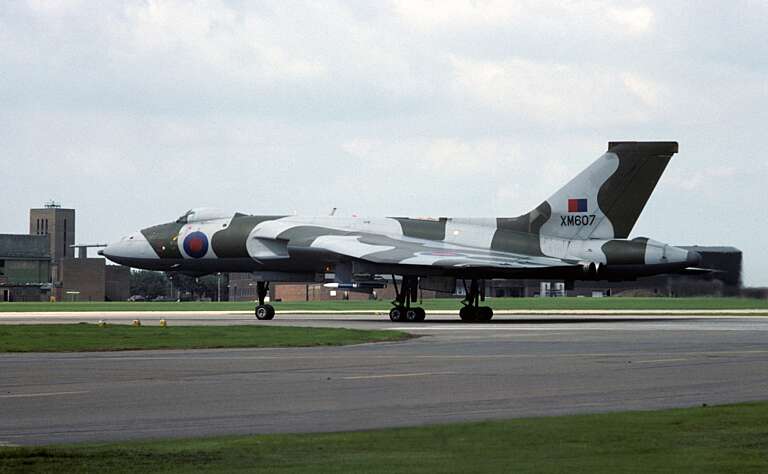
Operation Sky Shield
Operation Sky Shield was a series of three large-scale military exercises conducted in the United States. The Cold War games were carried out by the

Barry Masefield was the Air Electronics Officer (AEO) for Vulcan XH558 and had flown in this iconic aircraft for over 30 years, also being a key member of the Vulcan Display Flight (VDF), the RAF Unit which memorably flew the aircraft on the Airshow circuit until September 1992. Barry was also a member of the crew that flew XH558 into Bruntingthorpe Airfield on 23 March 1993 – her final flight in RAF service.
Fast forwarding to 18 October 2007, Barry was once again flying XH558, as a part of the crew, alongside Al McDicken and David Thomas, who made the historic First Flight from Bruntingthorpe, after the extensive restoration programme had been completed to return her to flying status. Barry had been a regular member of the Aircrew of XH558 since 2008, and had helped to thrill crowds around the country at Airshows and other events with a spectacular and memorable flying display, which has captured the hearts and minds of many thousands of spectators.
The following is a first hand account entry from Barry during the flying season of XH558.
‘Disappointment on the South Coast’
After such a great day on Saturday at the Bournemouth seaside air show, when XH558, flown by Martin Withers, Bill Ramsey and Phil Davies, followed up their first display with a further air show at Shoreham – it was somewhat of a disappointment that on the Sunday, the weather took a turn for the worse. We, that is Martin W, Bill R and I pitched up on the Sunday morning at the office at Doncaster, to start our pre-flight planning for a repeat of the previous day’s successful flight to the South Coast. The weather at Donnie was looking fine; the slight amount of cloud in the sky that we were experiencing locally was unfortunately, not the weather that the rest of the country was experiencing in the south and especially not around Bournemouth and Shoreham.
The plan for the day was for us to transit down to the south coast, fly a display at Bournemouth then transit along the coast to Shoreham where we were to meet up with the Blades display team before flying in formation over the Shoreham display venue. The Blades were then going to split from us to leave us to do our display before we would then transit up to Dunsfold airfield. At Dunsfold, Bill Ramsey was going to fly a practice display with a display examiner from the CAA observing from the ground. If Bill’s display was deemed to be satisfactory, then he would be given authority to carry out Vulcan displays for the next 12 months. That was the plan!!
We took off from Doncaster on time and flew our planned route down past Northampton, Buckingham and Didcot. As we flew further south the weather was starting to get progressively worse and we had to do quite a bit of weaving around the bits of bad weather to stay within our flying limits. As we neared Bournemouth, it got just a bit better and was well within our limits for display purposes. As we flew along the beach, I could see that even though the weather wasn’t a fine and sunny day like the day previous, a massive crowd had assembled to watch the flying display. It seems trite to just say that our guys at the front of the aircraft carried out their usual fine display but they flew the display in their normal professional manner, hopefully to the delight of the assembled spectators. All too soon, the display was over and we cleared from the Bournemouth display area to head east towards Worthing pier where we were going to meet up with the Blades.
We hugged the coast all the way up and finally the pilots could see the pier a few miles ahead. The weather was starting to get a little murky by this time but still within our limits. I dialled up the Blades aircraft discrete radio frequency and gave them a call to see whether they were in the area as arranged. Straight away their leader replied that they could see us and asked for permission to join us and fly alongside us in formation. At this juncture, as is our normal procedure, I handed the radio calls to the pilots for them to talk with the Blades and I concentrated on trying to search for them in my periscope. Eventually, they hove into view a few hundred yards astern and to the port side. Martin cleared them to join us in formation and once we were all joined up and were ready to show ourselves to the spectators at Shoreham, I called up the display controller and asked for clearance to commence our run-in. By this time it was quite murky, but we could see the display venue up ahead and we continued on until as we overflew the airfield, with the Blades switching on their smoke to complete the spectacle. We were going to go around and do another pass but by this time the Blades leader decided that the visibility wasn’t up to it and broke formation from us to leave us to commence our display.
Now on our own, Martin started his display at Shoreham – but it soon became evident that the weather was closing in quite rapidly, thereby reducing our visibility. Some of you may be aware that just to the north of the airfield is a range of hills which we need to have in sight continuously. Well, the hills started to become obscured in the cloud and after attempting to do a few orbits around the display venue, Martin very wisely decided that the weather was outside our limits and called a halt to proceedings. Because the cloud base had come down markedly the safe thing to do was to fly back out over the sea and make a decision on what we were going to do next.
As I said earlier, our next part of the plan was to fly up to Dunsfold for Bill to carry out his practice display. To do that meant flying inland once again through the murky weather. This was obviously not an option, so we decided that the best bet was to return to Doncaster and try and get Bill’s authorisation another day. However, life isn’t that easy. Our planned return route was by this time denied to us because of the weather, so we had to come up with an alternative plan for the return journey. It soon became apparent that the best route would be to continue along the south coast towards Kent before turning north towards Clacton, Mildenhall, Wisbech, and Waddington, then finally into Doncaster. Bill checked out the fuel situation to see whether we would have sufficient to fly the route, I meanwhile plotted the various turning points we needed to fly over and Martin flew the aircraft to keep us safely clear of the coast. It has always been said that ‘flexibility is the cornerstone of air power’ and this was flexibility in action.
Having finalised the new route, I started reprogramming my GPS in order to give the pilots headings to fly. Those of you who have read my previous blog will, of course, see some similarity to the route of the flight of a few weeks ago when we displayed at Dunsfold so I wasn’t a complete stranger to the area. As we progressed east along the coast, I was talking to the various Air Traffic Control units to get a radar service which would see us safely through any potential conflicts with gliders and light aircraft that may be airborne, on what was turning out to be quite a nice late Sunday afternoon for flying. We were by now well ahead of the weather front and the visibility was good.
Passing Dover Castle on our left, we turned north to head towards Clacton with Manston radar controller informing me that the skies ahead were clear before eventually handing me over to the Southend radar unit for our onward journey northwards. All was going well until I called up the USAF radar controller at Lakenheath and he was reluctant to allow us to fly though his airspace. Not a problem, we just turned right a few degrees to avoid his airspace and to head towards Norwich before turning west to head for RAF Marham thereby leaving the Americans out of the equation. They probably thought we were that 180 knot ‘glider’ that they had seen the week previous and are still recovering from the shock!!
Although it was late on, what was by now a fine and pleasant Sunday afternoon I was a bit concerned that RAF Marham might be launching their gliders for their evening flights. I knew that RAF Marham as a military unit would be closed – it being a weekend, but I called their radar controller anyway to see if anyone was there. I was quite surprised to get a reply over the radio from the Marham flying club who were monitoring the frequency and said that if we were going to be flying over the airfield they would be pleased to see us. Having ascertained that all of their aircraft were on the ground, we headed for the airfield to fly over their club at about 500 feet much to their delight. Job done, we set course for Doncaster and within about 15 minutes, Doncaster radar (who incidentally, are based at Liverpool airport) reported that they had me on their radar screen and cleared us for a straight-in approach to land.
It had been an eventful day. Because we had anticipated that the weather might turn against us and force a re-route upon us, it didn’t come as too much of a shock when the situation became a reality. Just goes to show that flexibility and planning provides the solution to most situations that life may throw at us. Landing with a serviceable aircraft is always a delight for Taff and his engineers and that day was to be no exception. I don’t know how they do it, but 558 just keeps soldiering on seemingly with no engineering problems.
Finally, if this blog sounds a bit rushed it’s because it is. It’s now Thursday lunchtime and I have get this submitted in time for publication for Friday’s edition of the Newsletter. I’ve been somewhat busy since Sunday which has taken me away from home and my laptop until late last night. In fact, I was fortunate to obtain some tickets for the Paralympics swimming finals which Rae and I went to on Tuesday and Wednesday. What a wonderful experience it was. Now that I’ve seen how these wonderful athletes perform with their attendant disabilities, it has convinced me that never again will I complain when I’ve got an achy leg or some such other niggling problem – all of which pales into insignificance alongside the problems these athletes have to endure. The Olympic Park itself is such a magnificent venue and it’s a true reflection of the fact that if you want something doing on a grand scale, then leave it to the British. Jingoistic – of course, but what’s wrong with that!! I’m just proud to be British.
That’s it. Once again, thank you for taking the time to read my blog. I’m off now to prepare myself for my son’s wedding on Saturday. All go, but I wouldn’t have it any other way.
Happy landings.
Barry Masefield

Operation Sky Shield was a series of three large-scale military exercises conducted in the United States. The Cold War games were carried out by the

The race was on again to prepare XH558 for the 2009 airshow season. A host of servicing requirements awaited the attentions of the Trust’s engineering

Two weeks before the first nuclear weapon was used for warfare, dropped on the Japanese city of Hiroshima, the results of the UK general election

Following the transfer of the strategic deterrent role to the Royal Navy’s Polaris fleet, on 30th June 1969, the RAF maintained three nuclear-capable Vulcan wings